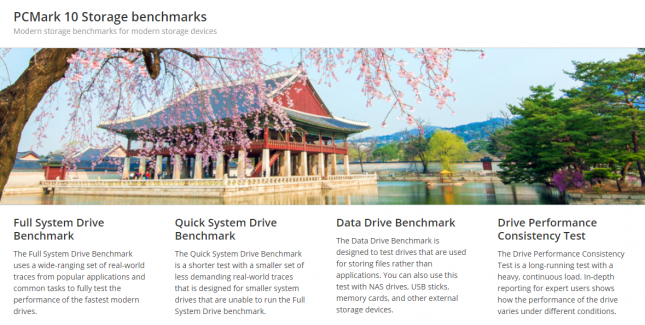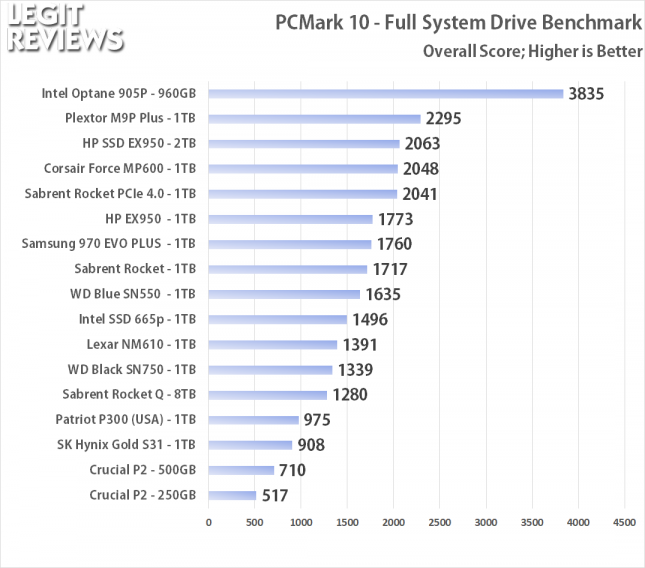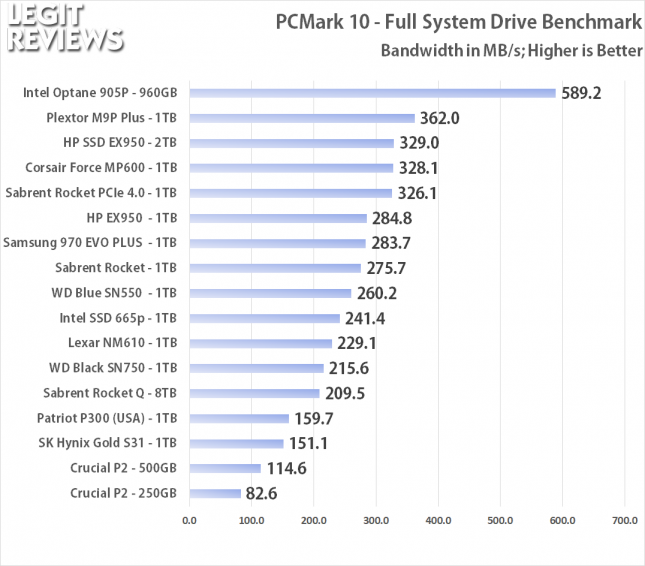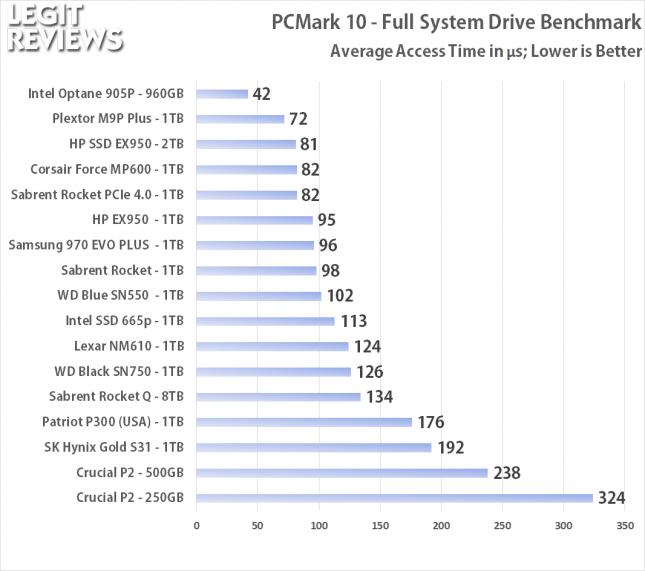Crucial P2 250GB and 500GB SSD Review
PCMark 10 Storage Benchmarks
PCMark 10
PCMark 8 was originally introduced in 2013 and the storage test uses only one thread to do everything. We are by no means living in the single-core era thanks to corporations like AMD offering CPUs with higher core counts than ever before. PCMark 10 Storage uses all the CPU cores available on the platform being tested and has been validated to support up to 5GB/s bandwidth. About half the available cores/threads are being used for generating the data needed for I/O and the other half are tasked with sending out I/Os. The I/O in both PCMark 8 and PCMark 10 is asynchronous. That means that the thread sending an I/O does not sit waiting for it to complete, but can instead queue more I/O to match the queue depth in the recorded trace. The CPU thread count used by the benchmark does not equal to the queue depth seen by the storage device. Most modern software has been written to be a muilthreaded solution where it can push IOs from multiple threads. This should play top the strengths of NVMe devices that have come out in recent years as they were designed to handle multiple queues at the same time. So, the take home message here is that PCMark 10 takes advantage of all available threads and uses newer real-world traces.
PCMark 10 – Full System Drive Benchmark Results:
The first test that we will be running is the PCMark 10 Full System Drive Benchmark. This benchmark uses a wide-ranging set of real-world traces from popular applications and common tasks to fully test the performance of the fastest modern drives. The goal of the benchmark is to show meaningful real-world performance differences between fast storage technologies such as SATA, NVMe, and Intels Optane. The Full System Drive Benchmark uses 23 traces, running 3 passes with each trace. Some of the traces include booting Windows 10 and start times for games titles Battlefield V, Call of Duty Black Ops 4, and Overwatch. It typically takes an hour to run and the number of bytes written to the drive during test with default settings is 204 GB.
On the full system drive benchmark the results show the Crucial P2 250GB and 500GB drives finished at the back of the pack with scores of 517 points and 710 points, respectively.
The PCMark 10 Storage Benchmarks overall score is calculated from the bandwidth and average access time sub-scores. The bandwidth subtest is defined by UL in PCMark 10 as bandwidth = bytes / busy_time_for_read_and_write. Here the Crucial P2 250GB drive finished at 82.6 MB/s and the P2 500GB drive came in at 114.6 MB/s.
The final subtest result is the average access time. During a trace playback in PCMark 10, the start and end time is measured for each I/O. So, the average access time is derived from the end time of an I/O subtracted from the start time of that operation. The Crucial P2 250GB drive had an average access time of 324 microseconds and the Crucial P2 500GB was slightly better with 238 microseconds. Keep in mind that this test was done with each drive filled to ~55% of its actual capacity.




